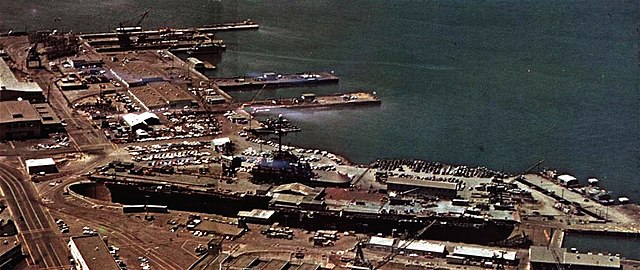
By
More than 30 years after it was declared a Superfund site by the Environmental Protection Agency, the old Hunters Point Naval Shipyard in San Francisco is now nearly cleaned up. But climate change could quickly undo the decades-worth of remediation work — and similarly threaten other polluted coastal sites across the country.
Navy ships that were irradiated during the nuclear weapons tests in Bikini Atoll in 1946 were decontaminated at Hunters Point, and the shipyard was also home to the Naval Radiological Defense Lab — all of which left the property literally radioactive, not to mention contaminated with other chemicals and heavy metals used in shipbuilding by the Navy.
But rather than remove all of the contaminated soil from the site, which sits alongside the historically Black San Francisco neighborhood of Bayview-Hunters Point, the government ultimately decided to leave some of it in place, covered with a cap of concrete or other material to keep it from washing away with the rain.
It’s a common practice at polluted sites, but it doesn’t account for what is an inevitability in low-lying areas like the shipyard: rising sea levels will push up groundwater levels, potentially causing the release of toxic chemicals into the surrounding environment.
Rising sea levels will push up groundwater levels, potentially causing the release of toxic chemicals into the surrounding environment.
“A lot of people don’t realize that the ocean actually extends under the land in coastal areas, so as the ocean rises, it pushes up the groundwater toward the surface,” Kristina Hill, an associate professor at the University of California at Berkeley, told Bloomberg.
According to a new study she co-authored published in the journal Earth’s Future last week, there are 325 additional Superfund sites around the country that are at similar risk to Hunters Point — and a disproportionate number of “socially vulnerable” communities are located alongside those Black and Brown and generally poor neighborhoods. Furthermore, there could be more than 132,000 polluted sites managed by state regulators at risk, too.
Even a small rise in coastal groundwater can create issues.
Unlike surface flooding due to sea-level rise, groundwater flooding is not nearly as well researched and understood — most states have not even mapped coastal groundwater.
But even a small rise in coastal groundwater can create issues, according to the report: “Increases of only a few centimeters of elevation can mobilize soil contaminants, alter flow directions in a heterogeneous urban environment with underground pipes and utility trenches, and result in new exposure pathways.”
The plan for Hunters Point was for the remediated land to be developed for housing, and with 12,000 homes (nearly a third of which will be for low- to moderate-income households) planned to be built, it would be the largest such project in the city in decades.
But because the groundwater issues at this particular Superfund site are at least somewhat known and documented, there are growing concerns about both the housing development and the risk the contamination presents to residents in Hunters Point-Bayview, too.
As for the hundreds of thousands of other contaminated coastal areas that could be affected by rising groundwater, many that also sit alongside Black and Brown communities, there’s rarely any sense that a potential problem exists at all.


